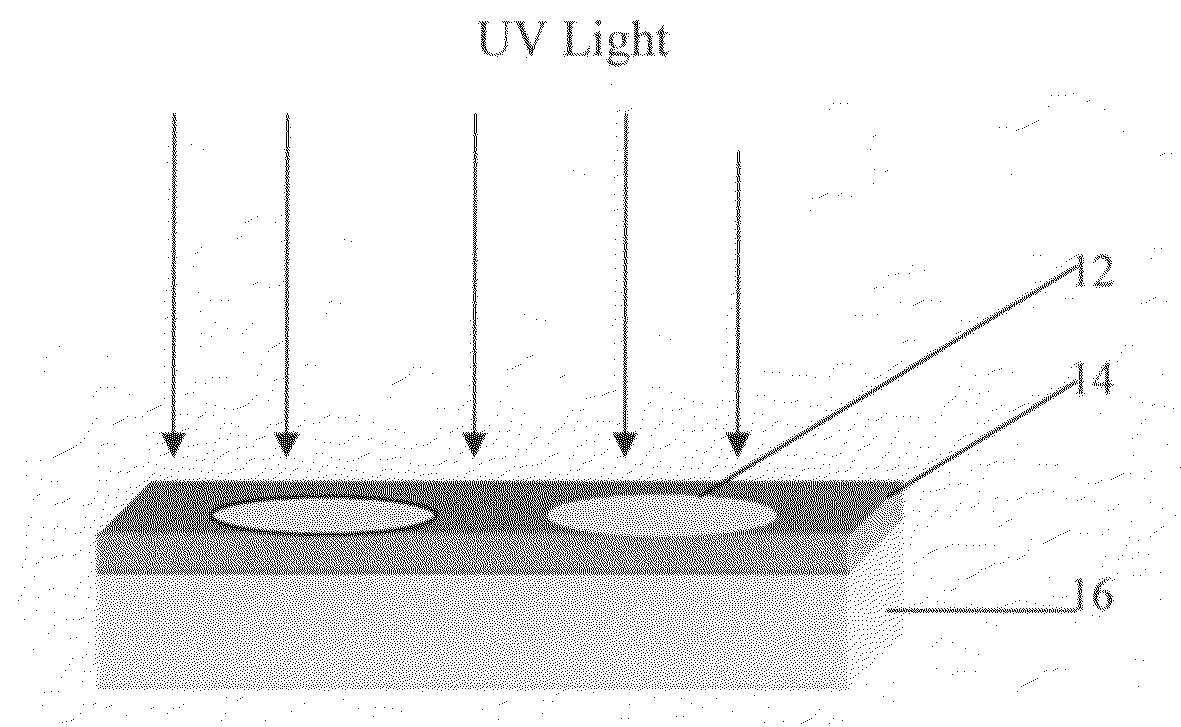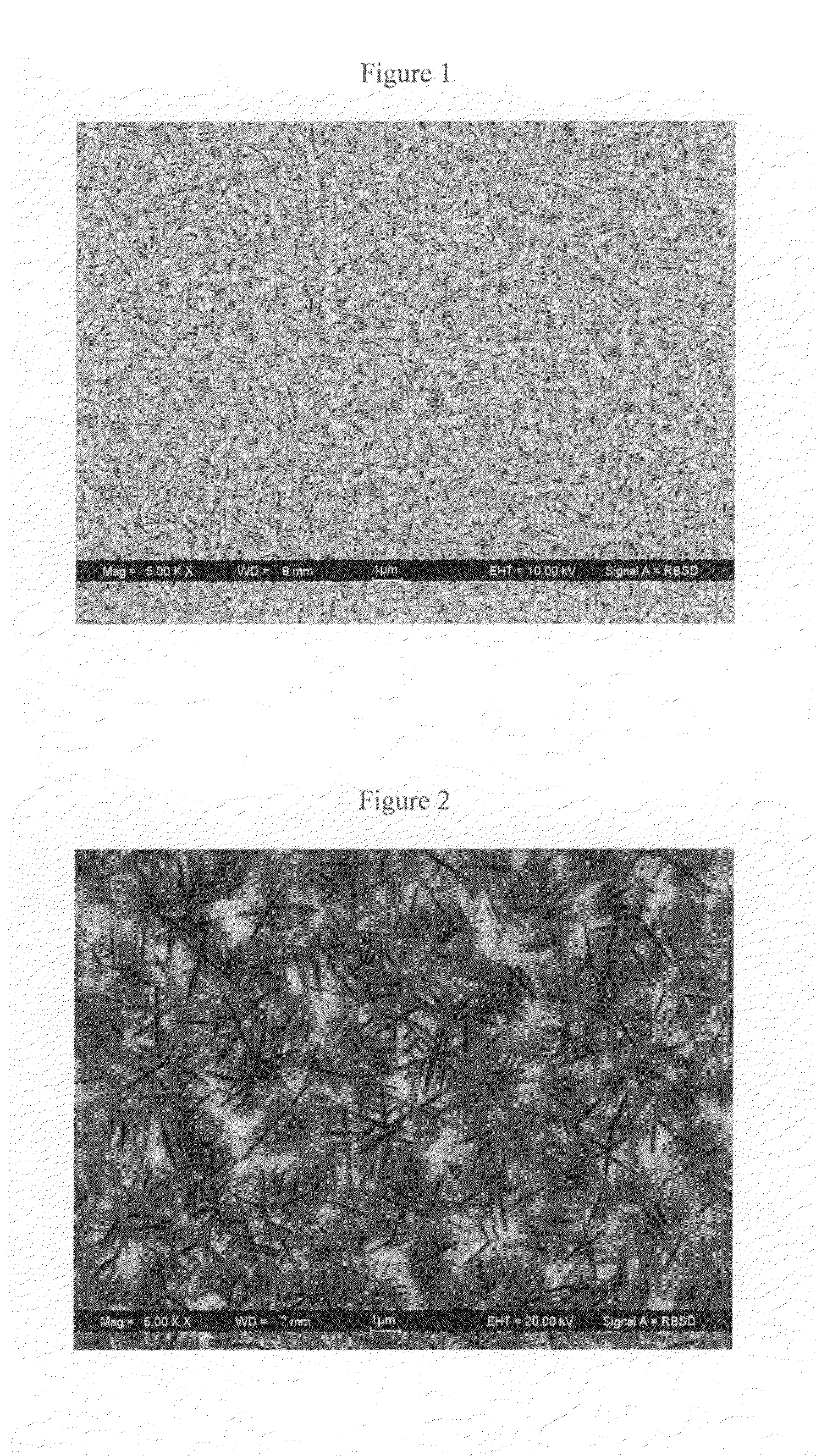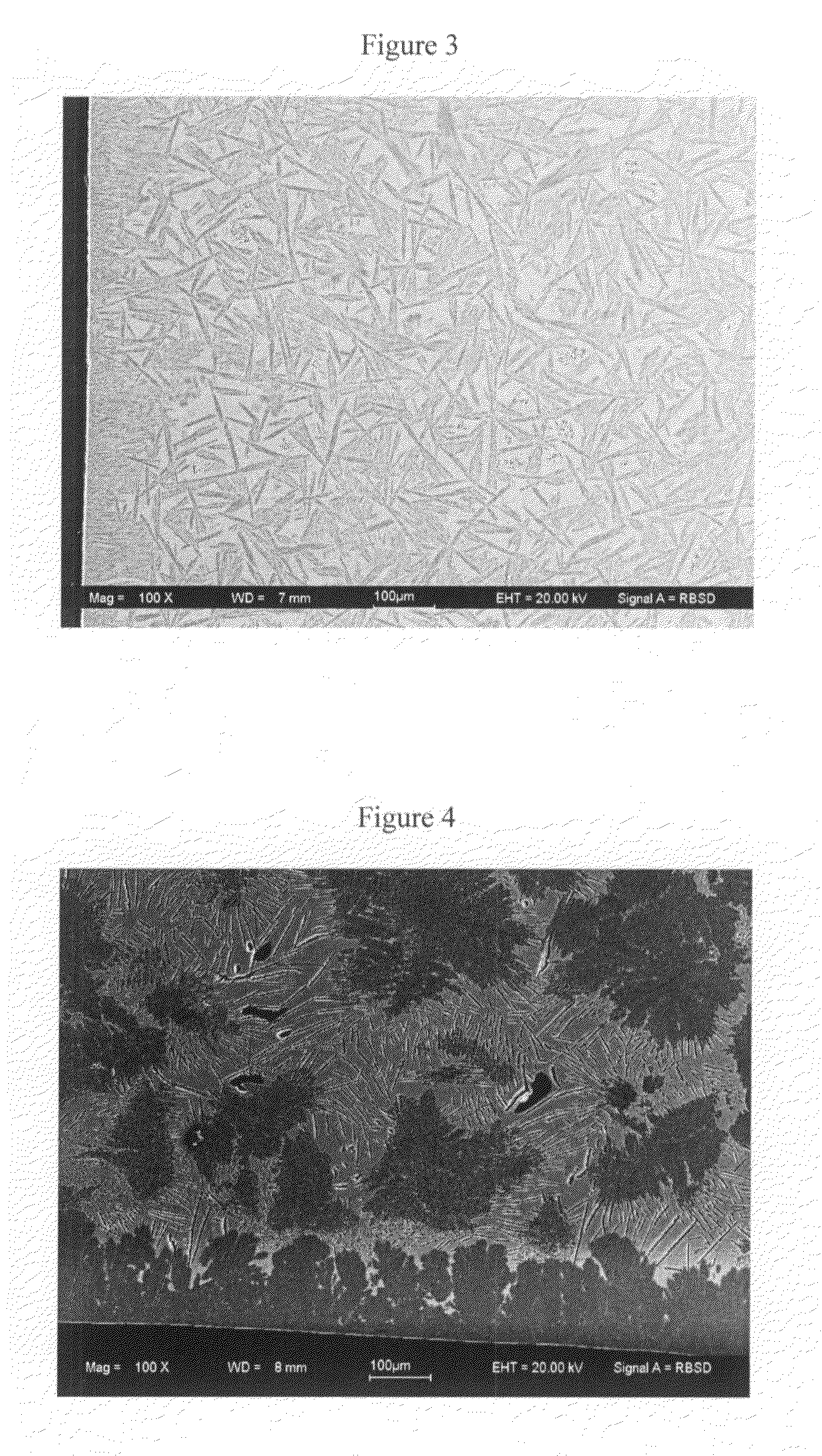Low CTE photomachinable glass
a technology of photomachinable glass and low cte, which is applied in the direction of glass tempering apparatus, instruments, photomechanical apparatus, etc., can solve the problems of limited application and relatively high thermal expansion coefficient, and achieve the effect of lowering the thermal expansion coefficien
- Summary
- Abstract
- Description
- Claims
- Application Information
AI Technical Summary
Benefits of technology
Problems solved by technology
Method used
Image
Examples
example 1
[0066]Two photomachinable glass compositions were compared. Glass A is a composition of the present invention comprising, by weight, 76% silica, 9.5% alumina, 9.5% lithium oxide, 1.6% ZnO, 1.2% Na2O, 2.4% K2O. 0% SnO2, 0.081% Ag, 0.0012% Au and 0.013% cerium oxide. Glass B is a prior art composition (Fotoform) comprising, by weight, 79% silica, 4.3% alumina, 9.4% lithium oxide, 0.11% silver chloride, and 0.018 cerium oxide. Both glasses were irradiated with light of 330 nm radiation, for 4 minutes, heat treated at 650° C. for one hour, and then subsequently heat treated at 850° C. for one hour. Glass A had a CTE of 4.9×10−6 / ° C. from 0° C. to 300° C., compared to Glass B with a CTE of 8.5×10−6 / ° C. from 0° C. to 300° C.
example 2
[0067]The etching rates of Glass A and Glass B, compositions as given in Example 1, were compared. Irradiation occurred with a wavelength of 330 nm. Separate samples of Glass A were exposed for 2 and 4 minutes. Glass B (Fotoform glass) received a standard exposure of 4 minutes. Etching was performed by immersion in a 10% solution of hydrofluoric acid. The etch rate of Glass B was 0.0130 mm / min. Glass A etched at rates of 0.0092 mm / min and 0.0143 mm / min at exposures of 2 min and 4 min, respectively. Glass A was at least as etchable as prior art, Glass B.
PUM
| Property | Measurement | Unit |
|---|---|---|
| temperature | aaaaa | aaaaa |
| temperature | aaaaa | aaaaa |
| temperature | aaaaa | aaaaa |
Abstract
Description
Claims
Application Information
 Login to View More
Login to View More - R&D
- Intellectual Property
- Life Sciences
- Materials
- Tech Scout
- Unparalleled Data Quality
- Higher Quality Content
- 60% Fewer Hallucinations
Browse by: Latest US Patents, China's latest patents, Technical Efficacy Thesaurus, Application Domain, Technology Topic, Popular Technical Reports.
© 2025 PatSnap. All rights reserved.Legal|Privacy policy|Modern Slavery Act Transparency Statement|Sitemap|About US| Contact US: help@patsnap.com



